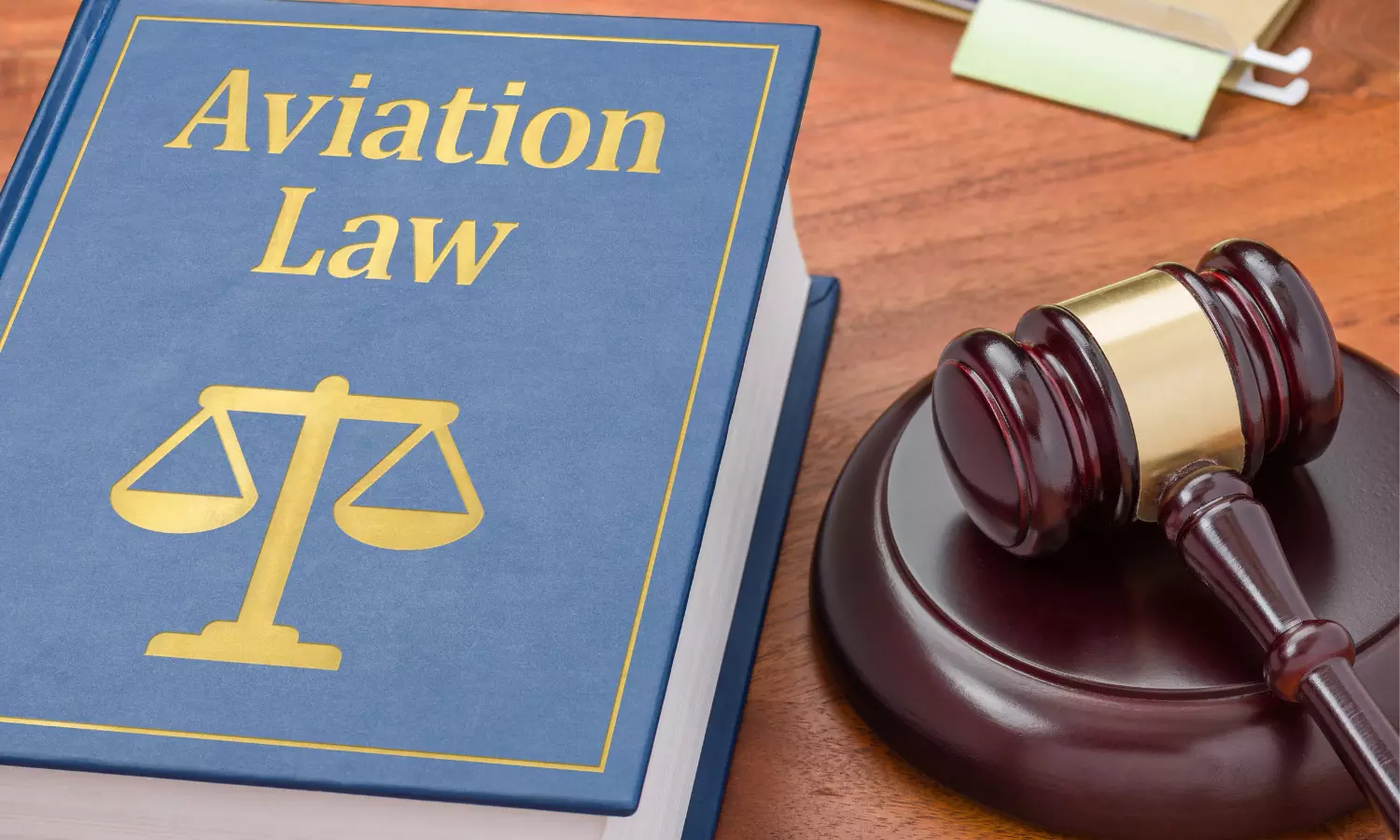An Insight into the Aviation Laws of India
The article 'An Insight into the Aviation Laws of India' by Radhika Mittal deals comprehensively with historical background, its importance, regulatory framework at the national and international levels, landmark cases pertaining to aviation laws, and India’s aviation ties with other nations

The article 'An Insight into the Aviation Laws of India' deals comprehensively with historical background, its importance, regulatory framework at the national and international levels, landmark cases pertaining to aviation laws, and India's aviation ties with other nations. Aviation not only provides a worldwide transportation network but also boosts the economic growth of a country. It facilitates international trade and tourism. Thus, helps in the creation of job opportunities and is essential for global business. This article goes deep into the aviation laws in India.
Introduction
Aviation holds an important place in a person's life and a country's economic growth. It connects people and cultures and facilitates international trade and tourism. With the onset of globalization and the development of aviation, there is an imminent need to have a comprehensive legal framework that covers each and every aspect of aviation. Thus, the concept of aviation law emerged. Going on to the literal meaning of aviation law, it means the rules and regulations governing aircraft activities.
Aviation law is the branch of law that is concerned with the operation of air transport and all the legal and business concerns associated with it. It is a series of rules that governs the use of airspace for aviation and its benefits for the general public and the nations of the world.[1]
Historical background
On the international footing, the first time the aviation law was set into motion was in 1910 when an air balloon from Germany was trespassing the French territory. Thereafter, the French government agreed with Germany, which paved the way for the beginning of aviation law in the world. Before this incident, the first scheduled flight took off between Paris to London in 1909.
With respect to Indian aviation history, the first commercial aircraft took off in 1911 from Allahabad to Naini and the first international commercial aircraft took off in 1912 from Delhi to Karachi, which was operated by Imperial Airways. By 1947, India had nine (9) air transport businesses that carry both, freight and people.
In the current scenario, India stands on a better footing in the aviation industry than it was, at the beginning of the aviation era. Today, there are end numbers of carriers and ventures that support domestic and international freight and population. There are good laws that govern the performance of aviation activities and better implementation of aviation policies takes place.
Regulatory framework
i) Domestic Laws
The Regulatory framework of Aviation Law in the domestic territory of India is the principal function of the Ministry of Civil Aviation under the Government of India which is the nodal agency responsible for the formulation of national policy and programmes for the development and regulation of the civil aviation sector in India.
There are certain autonomous and attached organizations under the Ministry of Civil Aviation over whom it exercises administrative control. These organizations are:
a. Directorate General of Civil Aviation (DGCA): It is the regulatory body that is responsible for the regulation of air transport services to/from/within India and for enforcement of civil air regulations, air safety, and airworthiness standards.
b. Bureau of Civil Aviation Security (BCAS): It is responsible for laying down standards and measures with respect to the security of civil flights at international and domestic airports in India.
c. Air Economic Regulatory Authority of India (AERA): The function of AERA is to determine the tariff for aeronautical services, and the amount of development fees and to monitor the set performance standards relating to quality, continuity, and reliability of services.
d. Airport Authority of India (AAI): It was established to accelerate the integrated development, expansion, and modernization of the operational, terminal, and cargo facilities at the airports in the country conforming to international standards.
e. Pawan Hans Helicopters Limited (PHHL): Its primary function is to provide helicopter support services to the Oil Sectors for its off-shore exploration operations, services in remote and hilly areas as well as charter services for promotion of travel and tourism.
There are certain legislations that govern the operation of the aviation sector in the country. These legislations are:
a. The Aircraft Act, 1934 and The Aircraft Rules, 1937: It regulates the manufacture, possession, sale, use, operation, import, and export of aircraft and stipulates the parameters for determining airworthiness, maintenance of aircraft, general conditions for flying and safety, registration of aircraft and the conduct of investigations.
b. The Airport Authority of India Act, 1994: This Act established the Airport Authority of India and makes it responsible for the development, finance, operation, and maintenance of all government airports in India.
c. The Carriage by Air Act, 1972: This Act governs the rights and liabilities of air carriers and applies to both, domestic as well as international air carriers.
d. Air Economic Regulatory Authority of India Act, 2008: This Act established the Air Economic Regulatory Authority of India and makes it responsible to perform the functions mentioned in the act.
ii) International laws
The aviation industry is a facet of international law because of the nature of air travel. At the international level, the International Civil Aviation Organisation (ICAO) is the apex authority that is responsible to maintain administrative and expert bureaucracy to support diplomatic interactions and to research new air transport policies and standardization innovations as directed and endorsed by the governments.
The International Civil Aviation Organisation is the specialized agency of the United Nation which provides general rules and mediates international concerns to an extent regarding aviation laws. This Organisation is the result of the Chicago Convention on International Civil Aviation that was signed on 7th December 1944 by 52 nations.
There is yet another organization that is running at an international level, this is the International Air Transport Association (IATA) which is a private organization aimed at promoting the interest of various airlines. It formulates a basic guide to dealing with unruly passengers.
Consumer protection and liability
There is a well-framed regulation for protecting consumers under aviation laws. The consumers can lodge a complaint against airline sectors directly to the aviation regulatory authority. The regulatory framework of aviation laws is held accountable for any shortcoming or difficulty that a consumer may experience which includes but is not limited to the followings:
- Cancellation/Rescheduling of flights/delays.
- Poor responses while enquiring on phones.
- Promised services are not provided.
- Misinformation provided by airline staff when called on phones.
- Pilferage of baggage.
- Misbehaviour at the counter.
- No proper guidance when passengers are in harnesses.
- Loss of baggage.
- Long procedure in getting a refund or even denial of funds.
Landmark cases
International Airport A.I. Officers Association v. Union of India[2]
In this case, a writ petition to declare the provisions of Section 12A of the Airport Authority of India (Amendment) Act, 2003 as being unconstitutional on grounds of violation of Article 14 of the Constitution of India was rejected.
Indian Airline limited v. Prabha D. Kanan[3]
In this case, Regulation 13 of the Indian Airlines (Flying Crew) Service Regulations was challenged as being unconstitutional.
Smt. Nipa Dhar (nee Ghosh) v. National Aviation Company of India Limited and Others[4]
In this case, the termination order of an air hostess was set aside and quashed by the Court on the grounds of not being enforceable and as being a violation of Article 14 and article 21 of the Constitution of India.
Maneka Gandhi v. Union of India[5]
In this case, the Supreme Court held that the right to travel abroad and come back to India is a fundamental right under Article 21 of the Constitution of India. The right to free movement functions as a vital element of personal liberty under Article 21 of the Constitution of India.
Priya Parameswaran Pillai v. Union of India[6]
In this case, the Supreme Court held that the right to travel abroad is a fundamental right under the Constitution of India, and any procedure that bars this right must not be arbitrary in nature.
India's Aviation Ties with Other Nations
India is the fourth largest civil aviation market in the world behind the US, China, and the UK. India is likely to overtake UK to become third largest air passenger market in 2024. India has bilateral aviation ties with almost 108 nations. There are seventy-two (72) international airlines and four (4) private domestic carriers which fly to 35 destinations in 25 countries.
Air India operates a number of overseas routes including:
- Seven (7) in North America;
- Nine (9) in Europe
- Two (2) in Africa
- Thirteen (13) in West and East Asia
India has proposed an open skies policy to the Association of South East Asian Nations (ASEAN) and gave extra frequency and landing spaces to SAARC Countries.
Importance of aviation laws
Aviation laws are very important because it provides a framework that keeps the aviation industry safe, secure, fair, and efficient. Aviation law covers everything from cargo transportation to passenger behaviour and from business regulations to the structure of airlines and charters.
Aviation law is helpful in the mediation of international air navigation, flight inspection, and the development of air transport standards. It prevents unlawful interference and facilitates border-crossing protocols for international civil aviation.
Conclusion
Aviation law is a complex branch of law due to a large number of factors like the globalization of aviation, the involvement of a large number of countries, commercial and business competition, and overlapping requirements. At present, the available laws and regulatory framework are consistent with the requirement of the nation.
References
1. Aviation Management- International Air Law, Available Here
2. AIR 2006 Del 46.
3. 2006 (11) SCC 67.
4. 2011 (2) WBLR 793 (Cal).
5. AIR 1978 SC 597.
6. 2015 SCC OnLine Del 7987.
Important Links
Law Library: Notes and Study Material for LLB, LLM, Judiciary, and Entrance Exams

